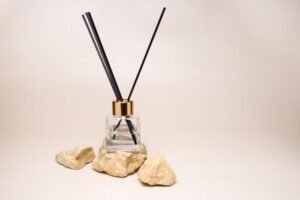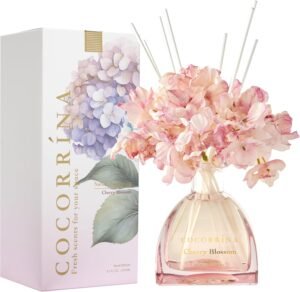You have poured your heart (and wax) into making a beautiful soy candle. You light it up, expect a burst of delightful fragrance, but… where is the scent? It is a common problem. Your candle might look great, but if it does not smell strong enough, it can be disappointing.
To make soy wax candles smell stronger, you must focus on key factors such as using the right type and amount of fragrance oil, ensuring proper curing time, selecting the correct wick size, and achieving precise pouring temperatures. Each step significantly impacts the final scent throw.
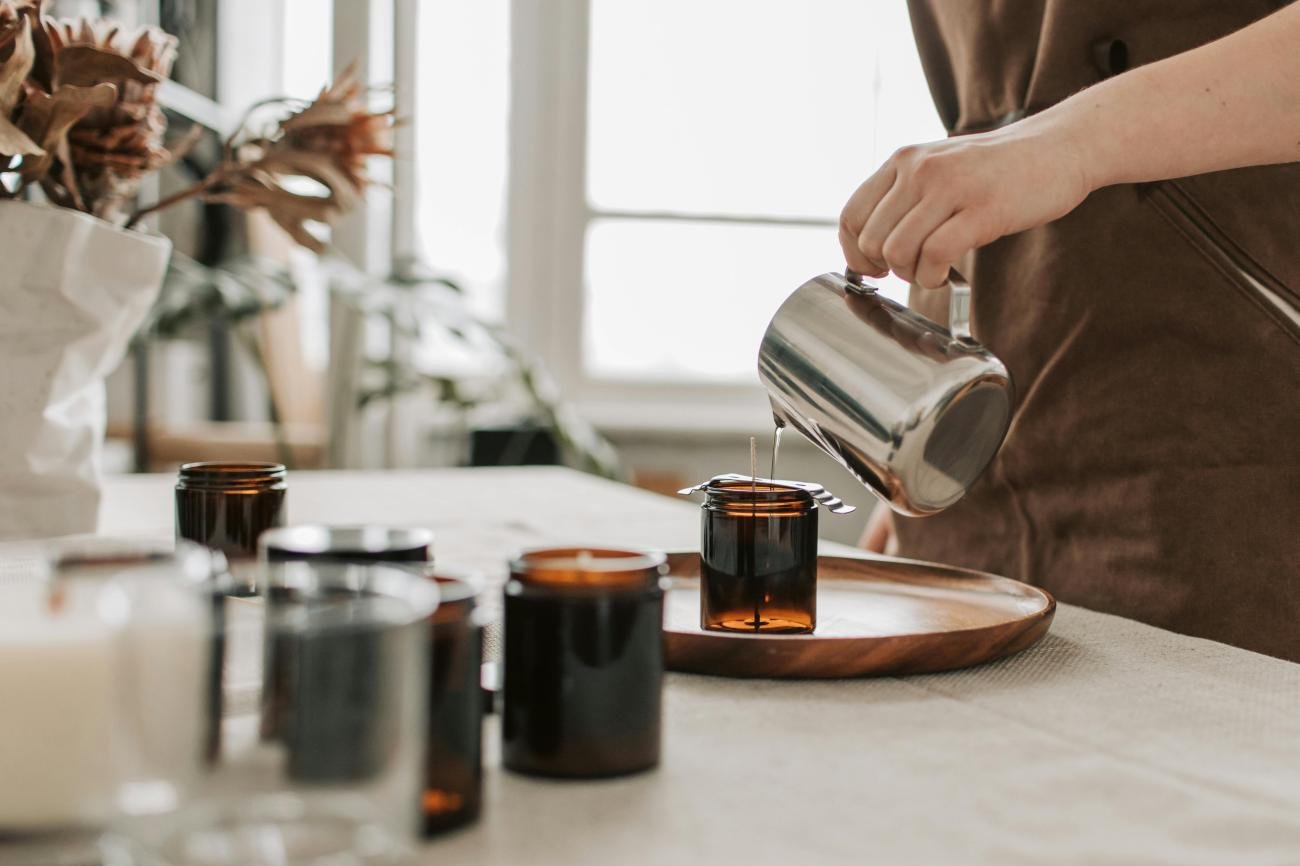
It really is frustrating when your candles do not deliver the scent punch you expect. My own sister once tried to make candles for her friends, and they barely smelled like anything. She called me, upset, asking what she did wrong. This led me to dig deep into the science of candle making, and I realized many common mistakes lead to weak scents. Let’s explore why your soy candles might not be as fragrant as you wish and how you can fix it.
Is Your Fragrance Oil The Problem?
The first place to look when your candle lacks scent is the fragrance oil itself. It is the heart of your candle’s aroma. If something is off here, your candle will not smell strong.
Yes, your fragrance oil is often the main reason why your soy candles might not smell strong. Factors such as the oil’s quality, its compatibility with soy wax, and the amount you use are critical. Using too little, or an incompatible oil, directly impacts the final scent throw of your candle.
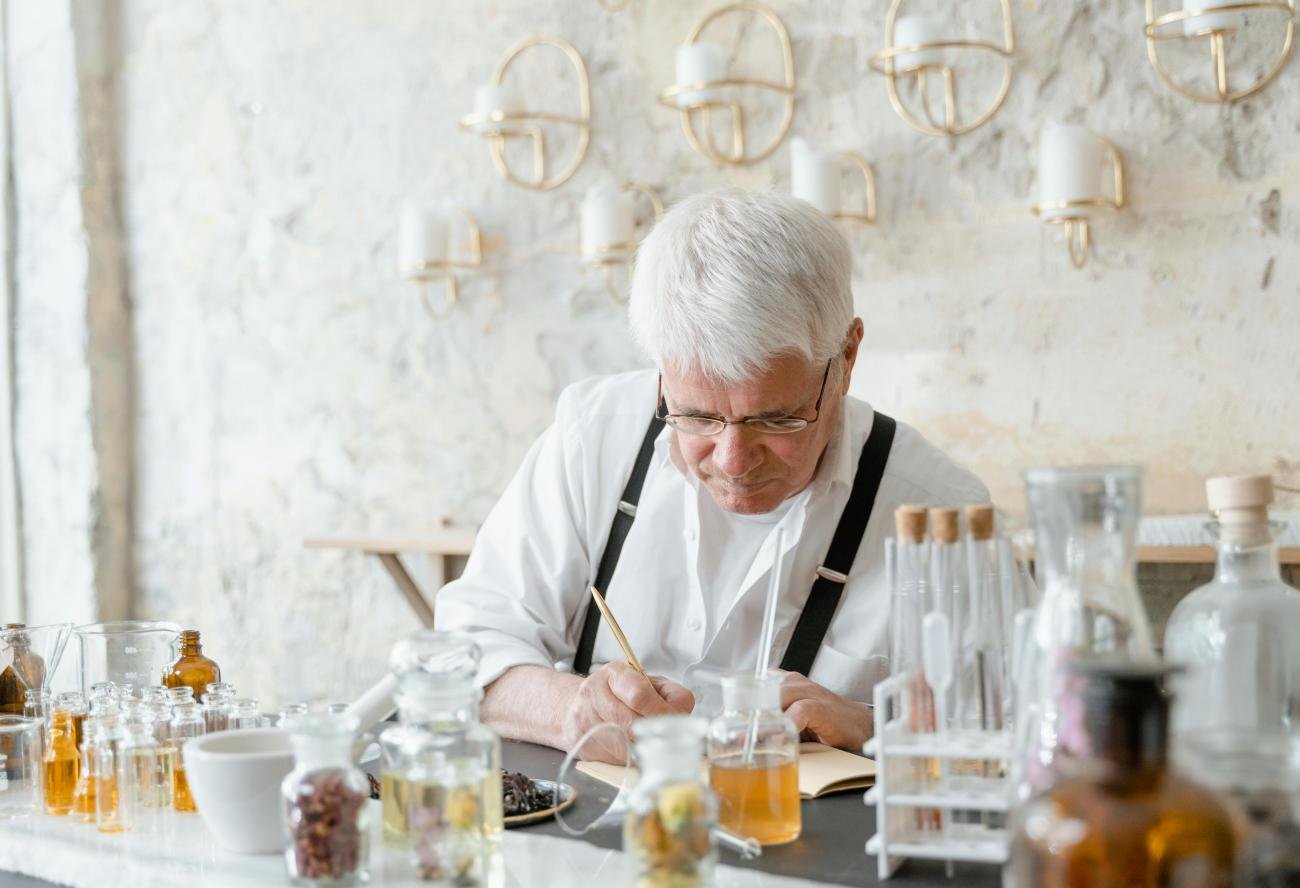
Let’s break down the role of fragrance oil.
Quality and Type of Fragrance Oil
Not all fragrance oils are made for candles. Some are for diffusers or soaps. Candle-grade fragrance oils are specifically made to withstand heat. They also have a good "flash point." This is the temperature at which the oil vaporizes and releases scent. If the flash point is too low, the scent will burn off quickly. If it is too high, it might not release scent well.
The quality of the fragrance oil also matters. Cheap oils might use fillers. Or they might have low concentrations of scent compounds. High-quality fragrance oils are more concentrated. They also typically have better testing done for candle making. As Eno, we offer high-quality oils. We ensure they are made for strong scent throws. We work with globally renowned brands. They trust our blends for their products. For our customers like Anita, who needs diversified products, we ensure a wide range of reliable fragrance options.
Fragrance Load (Ratio)
This is about how much fragrance oil you add to your wax. Candle makers talk about "fragrance load." It is a percentage of the wax weight. Most soy waxes can hold between 6% to 10% fragrance oil. Some can even go up to 12% in rare cases. Adding too little oil will make your scent weak. Adding too much can cause problems. It might make your candle not burn well. The excess oil can sometimes "sweat" out of the candle.
So, how do you find the right percentage?
- Start with the wax manufacturer’s recommendation.
- If your wax can hold 10%, try that.
- Always measure by weight, not by volume. A scale is very important here. For example, if you have 100 grams of wax and you want a 10% fragrance load, you add 10 grams of fragrance oil.
Here is a simple table:
| Wax Weight (grams) | Desired Fragrance Load (%) | Fragrance Oil Needed (grams) |
|---|---|---|
| 100 | 6% | 6 |
| 100 | 8% | 8 |
| 100 | 10% | 10 |
Experimenting with different fragrance loads is a good idea. But always stay within the wax’s recommended maximum. Going over can cause fire hazards and poor burning.
Does Your Wax Choice Matter?
Yes, the type of soy wax you choose plays a big role. It affects how well the fragrance oil mixes and releases its scent.
Yes, your wax choice significantly influences how strong your soy wax candles smell. Different soy waxes have varying capacities to bind with fragrance oils and release them effectively. The specific blend and additives in the wax impact both the hot and cold scent throw of your candle.
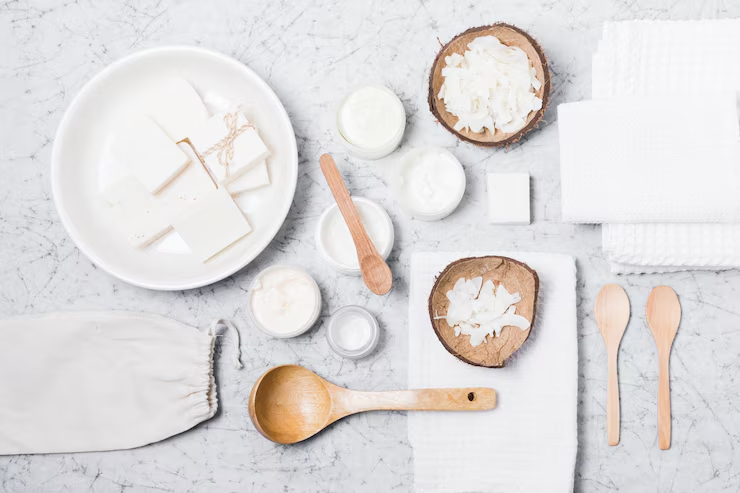
Let’s look at how wax affects scent throw.
Pure Soy Wax vs. Blends
Pure soy wax is nice. It is natural. But pure soy wax can sometimes struggle with scent throw. It is often softer. It does not always hold onto fragrance as well as some blends. This is because pure soy wax might have a slightly uneven crystal structure. This can trap some fragrance molecules.
Many candle makers use soy wax blends. These blends often have a small amount of other waxes. This includes paraffin or coconut wax. These additives improve the wax structure. They can help the wax hold more fragrance. They also release fragrance more evenly. For example, a soy-coconut blend often has a better scent throw than pure soy. They also burn cleaner. When we develop products, we consider these factors. Our goal is to ensure the best possible scent delivery.
Wax Additives
Some waxes come with built-in additives. This makes them better for candles. Sometimes, you can add your own. Stearic acid or Vybar can improve scent throw. They make the wax harder. They also help distribute the fragrance better. But be careful. Adding too many additives can change burn properties. It might make the candle tunnel. It can also affect the flame size.
It is always best to start with a wax designed for container candles. These waxes often have additives already in them. They are optimized for good scent throw and a clean burn. This helps simplify the process for beginners. For professional brands like those Lisa works with, we ensure our wax recommendations are precise. This helps them achieve consistent results for their product lines.
Is Your Wick Size Wrong?
This is a very common mistake. And it affects scent throw a lot. The wick creates the melt pool. The melt pool is vital for scent release.
Yes, using the wrong wick size is a critical factor affecting your candle’s scent strength. An undersized wick creates too small a melt pool, which cannot fully vaporize the fragrance oil. Conversely, an oversized wick burns too hot and can evaporate the scent too quickly, leading to poor scent throw.
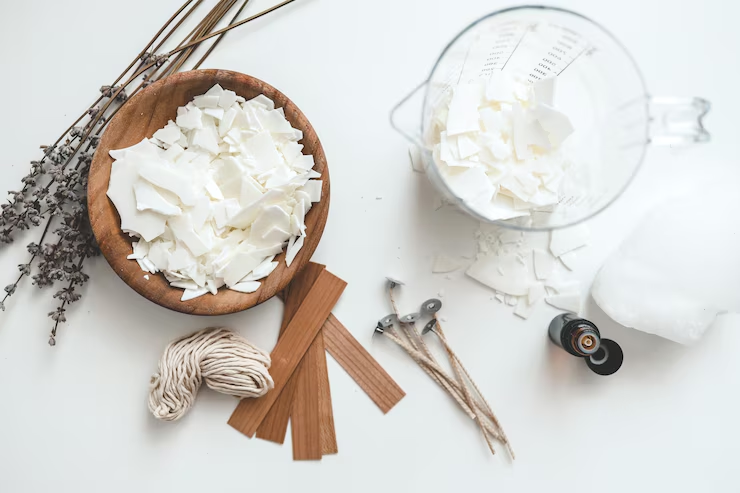
Let’s understand the importance of the wick.
The Melt Pool
When a candle burns, the wick melts the wax around it. This creates a liquid wax pool. This is the "melt pool." The fragrance oil is suspended in this wax. The heat from the wick causes the fragrance to vaporize from this melt pool. This is how the scent gets into the air.
- Too small a melt pool: If your wick is too small, the melt pool will not reach the edges of the container. It will be shallow. This means less fragrance oil is vaporized. Your scent will be weak. You might also get "tunneling." This is when the wax on the edges does not melt.
- Too large a melt pool: If your wick is too big, the melt pool will be very deep and wide quickly. It will also be too hot. This can burn off the fragrance oil too fast. It can also make a large flame and create soot. The scent might be strong at first but fade quickly.
The goal is to have a full melt pool. It should reach the edges of the container within 2-3 hours of burning. The depth should be about 1/2 to 3/4 inch.
Wick Material and Type
Different wicks suit different waxes and fragrance loads.
| Wick Type | Description | Best For |
|---|---|---|
| Cotton Core | Cotton braided around a paper core. | Standard waxes, medium fragrance loads. |
| Zinc Core | Cotton braided around a zinc wire. | Traditional, but can cause mushrooming. |
| Wood Wicks | Wooden, flat or spiraled. | Often in soy and coconut blends, crackles. |
| HTP Wicks | Braided cotton with paper filament. | Great all-rounder, good for soy and blends. |
| CD Wicks | Bleached cotton with paper threads for stiffness. | Good for soy, self-trimming. |
It is very important to test wicks. You need to test with your exact wax, fragrance oil, and container. Small changes in any of these can mean you need a different wick size. For our Amazon sellers, we often provide guidance on wick selection. This helps them get the perfect product for their customers right from the start.
Do Your Temperatures Affect Scent?
Yes, the temperatures you use during candle making are really important. They affect how well the wax and fragrance oil bind together.
Yes, the temperatures during your candle-making process significantly impact scent strength. Adding fragrance oil at the wrong temperature can cause it to evaporate prematurely or not bond properly with the wax, resulting in poor hot throw. So, precise temperature control is vital for a stronger smelling candle.
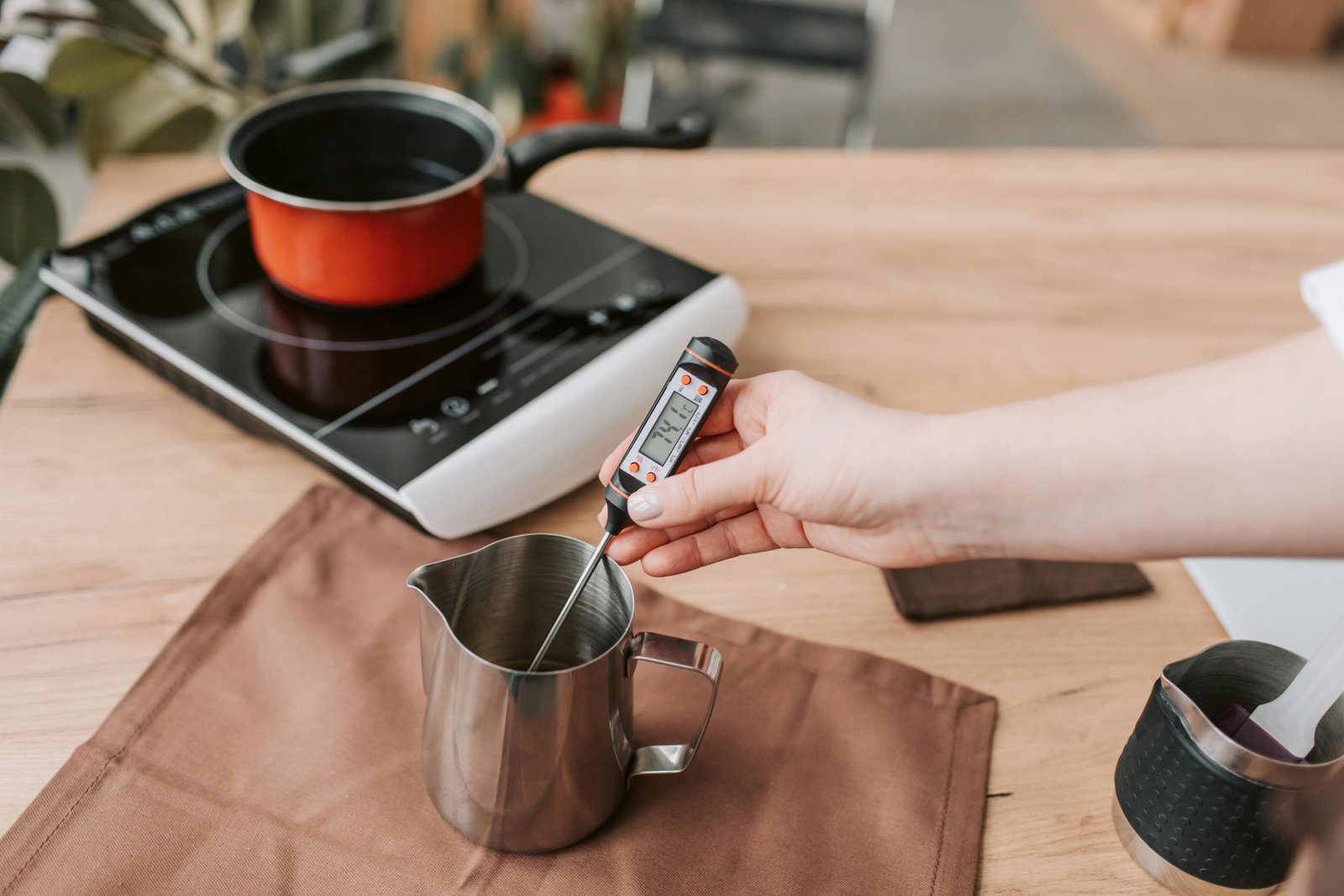
Let’s look at the critical temperatures.
Adding Fragrance Oil
This is one of the most common mistakes. If you add your fragrance oil when the wax is too hot, it will evaporate. The scent will literally float away before it even gets into the candle! If the wax is too cool, the oil might not mix well. It might not bond as strongly with the wax. This means less scent when the candle burns.
Every wax has a recommended "pour temperature" and a "fragrance add temperature." These are usually different. The fragrance add temperature is often higher than the pour temperature. This allows the oil to mix thoroughly with the wax. But it should not be so hot that the oil evaporates.
- Heat wax: Melt your wax fully. Follow your wax manufacturer’s instructions.
- Cool wax to fragrance add temp: Let the wax cool down to the recommended temperature for adding fragrance. This is usually specified by the wax supplier.
- Add fragrance and stir: Add the pre-measured fragrance oil. Stir gently but thoroughly for at least 2 minutes. This makes sure the oil is fully blended with the wax.
- Cool to pour temp: Let the wax cool further to its recommended pour temperature before pouring into your container.
This process ensures the fragrance oil is bound properly within the wax matrix.
Pouring Temperature
The temperature at which you pour your wax also matters. If you pour wax that is too hot, it can cause "wet spots" or "frosting." These are cosmetic issues. They can also affect how well the fragrance is released. If the wax is too cool, it might set too quickly. This can trap air bubbles. It can also lead to an uneven surface. It can prevent proper adhesion to the jar.
A consistent pouring temperature helps create a smooth candle surface. It also helps the wax adhere well to the container. This indirectly supports a better scent throw. A uniform candle structure allows for even burning and consistent fragrance release. Our design team focuses on ensuring stable pouring conditions. This is part of our quality process.
Is Your Candle Not Cured Enough?
This is perhaps the most overlooked step in candle making, especially for beginners. Curing time is crucial for soy wax.
No, your candle might not be cured enough. Curing time is essential because it allows the fragrance oil to bond fully with the wax at a molecular level. If you burn your soy candle too soon, the scent molecules are not properly integrated, leading to a much weaker fragrance throw than desired.
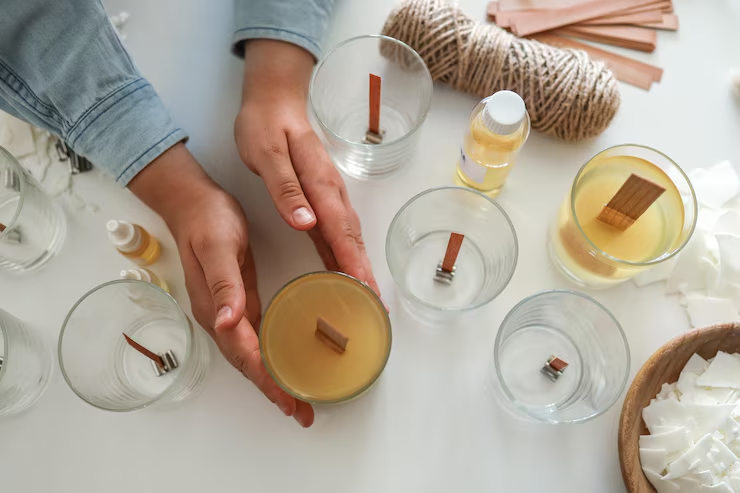
Let’s understand curing.
What is Curing?
Curing (or "set time") is the period after pouring the candle. During this time, the wax and fragrance oil mature together. It is like aging wine. The fragrance molecules slowly mingle and bind with the wax crystals. This process strengthens the scent throw when you burn the candle.
Soy wax needs time to cure. Generally, soy candles need at least 1-2 weeks of curing. Some candle makers even wait 3-4 weeks for the best results. If you light your candle too soon, the scent will be weak. The fragrance molecules have not fully integrated into the wax. They evaporate without releasing their full potential.
The Science Behind Curing
Think of it like this: when you mix fragrance oil into hot wax, the molecules are floating around freely. As the wax cools, it forms a crystal structure. During curing, the fragrance oil molecules slowly get "locked in" or adsorbed into this wax structure. This binding makes the fragrance more stable. When the candle burns, these locked-in molecules are released more effectively. They create a stronger and more consistent scent.
My sister’s candles? The main problem was she lit them the very next day! I told her to wait two weeks, and suddenly, her candles had a lovely throw. This is a simple but powerful fix. Be patient. Let your candle cure in a cool, dry place. Make sure to label your candles with the pour date. This helps you track their curing time. This simple step can make a huge difference in your candle’s scent strength.
Conclusion
Making soy wax candles with strong scent throw takes practice and attention to detail. Focus on using high-quality fragrance oil at the right load, choosing the best wax and wick for your setup, controlling temperatures accurately, and most importantly, allowing sufficient curing time. By mastering these elements, your homemade candles will fill rooms with beautiful, lasting fragrance.


